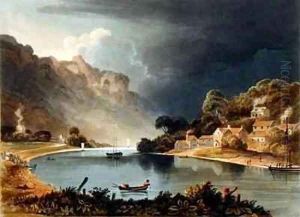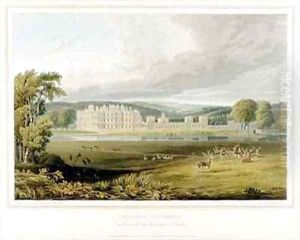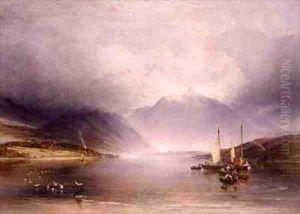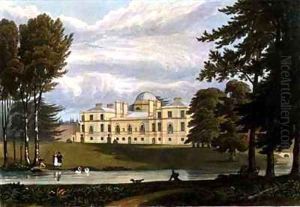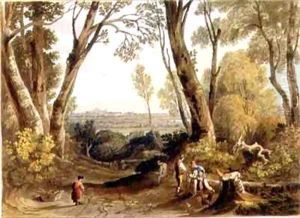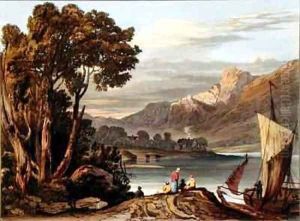A. V. Copley Fielding Paintings
Anthony Vandyke Copley Fielding, commonly known as Copley Fielding, was a distinguished English painter and watercolorist born in 1787 in Sowerby, near Halifax, England. He was part of a family deeply involved in the arts; his father, Nathan Fielding, was a notable portraitist, and his brothers, Thales and Theodore, were also artists. This environment nurtured his early interest in painting, leading him to pursue a career that would eventually earn him a prominent place in the British art scene of the 19th century.
Copley Fielding's education in art began under the guidance of John Varley, a respected watercolorist, which helped him develop a profound understanding and mastery of the medium. His style was predominantly influenced by the picturesque and romantic landscapes of his time, capturing the sublime beauty of the British countryside with a remarkable delicacy and atmospheric effect. He was particularly renowned for his expansive skies, detailed textures, and the serene mood that pervaded his landscapes.
In 1810, Fielding became an associate member of the Royal Watercolour Society (RWS), and just three years later, in 1813, he was made a full member. His association with the RWS played a significant role in his career, and he served as its President from 1831 until his death in 1855. During his tenure, he contributed significantly to raising the profile and standards of watercolor as a respected artistic medium. Fielding's works were widely exhibited, not only at the RWS but also at the Royal Academy and the British Institution.
Throughout his career, Fielding enjoyed considerable public and commercial success. His landscapes were highly sought after by collectors, including members of the British royalty. Despite the popularity of his landscapes, he was also skilled in other genres, including portraiture and marine scenes, although these constituted a smaller portion of his oeuvre.
Copley Fielding's legacy is that of a leading figure in the Golden Age of British watercolor. His works are characterized by their technical skill, emotional depth, and the ability to convey the sublime nature of the landscape. He passed away in 1855 in Worthing, Sussex, leaving behind a body of work that continues to be celebrated for its contribution to the development of watercolor painting in Britain.
